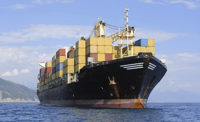US Foods Holding Corp., Rosemont, Ill., released the results of a new survey of 500 independent restaurant decision makers to gauge their outlook on critical operational decisions. Although half of restaurant decision makers think technology is a way to address food waste, manage staff and drive customer traffic, only one-third of them are implementing it.
“This gap between the promise and adoption of technology to run restaurants successfully is an important one to close,” says Adam Stinn, director of business solutions. “There is a universe of technology solutions that can reduce the operating headaches. But, that’s also the problem – the number of choices and the time it takes to sort through them.”
Independent operators identified three primary areas as the biggest opportunities:
Driving customer traffic
According to the survey results, a quarter of restaurant decision makers feel that attracting customers has gotten harder in the last year.
Compared to a year ago, marketing decision makers are investing more into how they promote their restaurants, with 75% offering more specials for customers, 68% spending more on digital advertising, 67% hosting more events and 51% using third-party services. Most marketing decision makers (80%) said keeping up with the competition’s marketing efforts was important to them.
Staffing can be stressful
This survey found that half of restaurant decision makers named hiring, training or managing staff as their greatest sources of stress.
Forty-nine percent also expressed concern about a labor shortage in the restaurant industry, and 59% felt confident in hiring skilled employees. Further, only 20% said they were increasing their recruiting efforts, while 30% were creating robust employee training programs.
Fighting food waste
According to the survey, 79% of restaurant decision makers are at least somewhat concerned about food waste in their restaurant, but they struggle to prioritize and act on their concern, citing inefficient food preparation (36%), the inability to accurately forecast demand (35%) and portion sizes (34%) as the main drivers of waste in their restaurants.
Three in five (58%) food decision makers say they are tracking some things related to food waste, but know they could be doing more to meet their goals. Meanwhile, only about a third (30%) have a formal process in place to track their goals.



